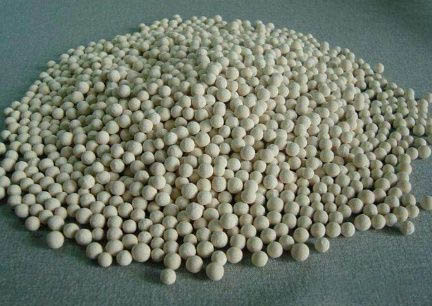
Zeolite molecular sieve Performance, synthesis
Zeolite is a water bearing frame shaped aluminosilicate mineral, which can be divided into natural and artificial, and can be used as molecular sieve. Due to the high impurity content of natural zeolite and the different size of voids, the performance of its molecular sieves is limited and it is difficult to achieve practical application. Therefore, synthetic zeolite molecular sieves are widely used in practical production and life.
The general chemical formula of zeolite molecular sieve is Mp/n [(AlO2) p · (SiO2) q] · yH2O. Where M is a metal ion, n is its valence state number, p is the molecular number of AlO2, q is the molecular number of SiO2, and y is the hydration number. Zeolite molecular sieves have uniform pore structure, large specific surface area and pore volume, good hydrothermal stability and strong acidity. Because of its special structure and performance, it has good properties such as molecular sieving, adsorption, ion exchange and catalysis, and has been widely used in petrochemical industry, environmental protection, bioengineering, food industry, pharmaceutical chemical industry and other fields.
At first, the method of preparing zeolite molecular sieve was to simulate the geochemical process of natural zeolite formation. After long-term exploration, researchers at home and abroad have constantly improved and innovated the traditional methods. At present, the synthesis of zeolite molecular sieves mainly includes: hydrothermal synthesis, solvothermal synthesis, gas phase transfer, dry conversion, (solvent-free) dry powder system synthesis, combinatorial chemical hydrothermal synthesis, ion thermal synthesis, microwave radiation synthesis and other methods.
